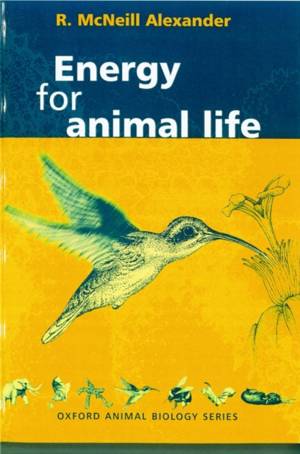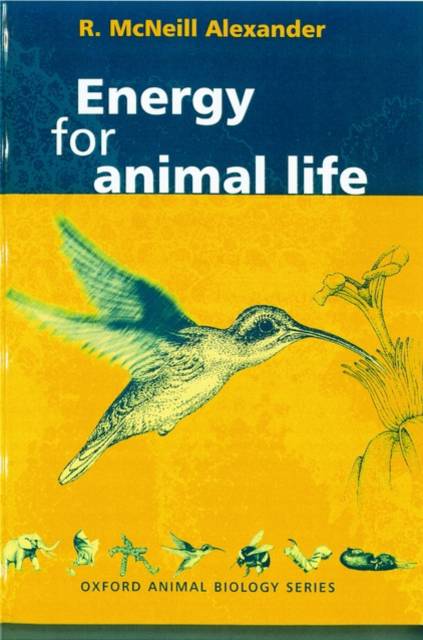
- Afhalen na 1 uur in een winkel met voorraad
- Gratis thuislevering in België vanaf € 30
- Ruim aanbod met 7 miljoen producten
- Afhalen na 1 uur in een winkel met voorraad
- Gratis thuislevering in België vanaf € 30
- Ruim aanbod met 7 miljoen producten
Zoeken
€ 76,45
+ 152 punten
Omschrijving
Life depends on energy, and the majority of animal activity centers around finding energy in the form of food. Energy for Animal Life, the first book in the innovative new Oxford Animal Biology Series, gives a thorough yet precise description of how animals get and use energy -- a central topic in understanding animal biology. From solar radiation and photosynthesis to food sources for herbivores and carnivores, this book encompasses the food chain. It compares the merits of different designs of the digestive system as well as of different strategies for finding and choosing food. Several chapters go beyond the question of feeding, exploring the energy costs of motion and the energy demands of growth and reproduction. The final chapter draws together all aspects of energy use to consider the energy budgets of several different animals and to assess the different energy gains and costs of their everyday activities in the wild. As a truly comparative book, it draws on patterns from
a wide range of animal species and includes practical information for relevant experiments. It also avoids highly complicated examples, making Energy for Animal Life perfect reading for first and second year undergraduates taking a degree course in biological sciences.
a wide range of animal species and includes practical information for relevant experiments. It also avoids highly complicated examples, making Energy for Animal Life perfect reading for first and second year undergraduates taking a degree course in biological sciences.
Specificaties
Betrokkenen
- Auteur(s):
- Uitgeverij:
Inhoud
- Aantal bladzijden:
- 176
- Taal:
- Engels
- Reeks:
Eigenschappen
- Productcode (EAN):
- 9780198500520
- Verschijningsdatum:
- 27/05/1999
- Uitvoering:
- Paperback
- Formaat:
- Trade paperback (VS)
- Afmetingen:
- 231 mm x 152 mm
- Gewicht:
- 292 g

Alleen bij Standaard Boekhandel
+ 152 punten op je klantenkaart van Standaard Boekhandel
Beoordelingen
We publiceren alleen reviews die voldoen aan de voorwaarden voor reviews. Bekijk onze voorwaarden voor reviews.











